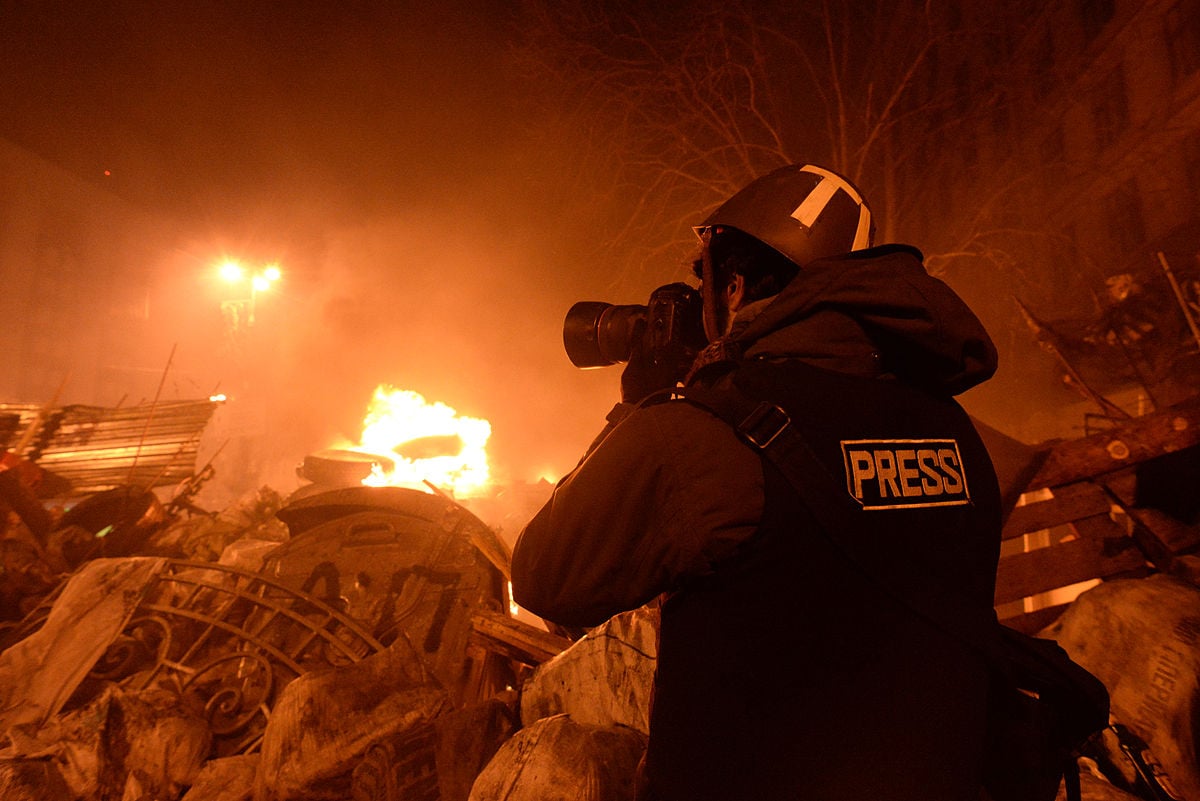
Lead Director of BBC’s Arabic service Edmond Sabella, upon Media.am’s request, offered a few tips for journalists working in armed conflict zones.
Travel preparation
- Research the place you are going
- Become acquainted with the other members of your team, if you don’t know them
- Learn about the country’s political, cultural, and ethnic issues
- Determine what infrastructure and medical clinics there are near where you will be
Necessary documents
- Passport with more than 5 blank pages, visas, and more than 6 photos
- ID card
- Paper maps
- Health, will and vehicle documents
Risk assessment
- Is there a conflict, civil disorder, terrorism or other criminal threat?
- Are there environmental or geographical risks?
- Is there a threat of an emergency or crisis situation?
- Is there the threat of kidnapping or arrest?
- Are there problems related to communications, transportation, or information security?
- Is there anyone on your team with your blood type?
- Do you have contacts of people whom you can contact if necessary?
Necessary equipment
- “Grab bag” [see below]
- Personal protective equipment (bulletproof vest, helmet, ballistic goggles, mask)
- Everyday clothing
- Trauma and first aid kit
- Means of communication
The “grab bag” should contain
- Trauma dressing
- Laminated copy of documents
- Cash
- Duct tape
- Local map
- Compass
- Torch
- Whistle
- Head scarf
- Emergency food (chocolate, protein bars)
- Swiss Army knife
- Strong cord
- Simple mobile phone with an extra battery
To protect your personal safety, you should
- Recognize a threat
- Evaluate your position
- Avoid where possible
- Diffuse the situation
- Exit the area
- Seek local knowledge
- Wear sensible clothing
- Don’t wear jewellery
- Look and act confident and not lost
- Low profile is better
In a vehicle, you should
- Sit behind the driver
- Know where you are going
- Check the vehicle’s wheels, lights
- Agree on the fare before you go and pay when you reach your destination
- Keep the doors locked
- Check child locks are not activated
- Leave space between your and other vehicles
- Park the vehicle in such a way as to be ready to move quickly and watch each other’s back
- Stow equipments properly
- Wear seat belts
At checkpoints
- Communicate with your team, lock the doors, show your hands, observe, and have your ID ready
- Tell the driver to lower the lights
- Open the window about a third and keep the engine running
- If you don’t understand the language, show your ID and the area where you came from and where you’re going on the map
- Be calm and polite
- Try not to offer alcohol
- Try not to offer any lifts
In hostile environments, you should have
- A bulletproof vest, helmet and eye protection
- A trauma pack with a tourniquet, hemostatic agent, field dressing and chest seal
- A grab bag and satellite phone
- Travel insurance
During shelling
- If your vehicles if under fire, get low and drive away. If vehicle has stopped working, exit, get behind the engine, and prepare to run away from the vehicle.
- If you are under small arms fire, run away, stay low and take cover from view, get into the ground, get behind walls or sand bags or very thick trees
- To protect yourself against RPG and grenades, act the same way as under small arms fire
- In the case of large-calibre firearms or heavy artillery, stay away as far as you can and zoom in with your camera
If there are mines, explosive remnants of war (ERW), and improvised explosive devices (IED)
- For mines: stay on the tarmac and pay attention to mine signs
- In a mine field, stop, shout to the rest of your team to stop, assess the situation, call for help and wait. If no help arrives, backtrack and walk back in your own tracks.
- For ERW: do not pick up souvenirs, don’t touch or go near ammunition, don’t be a military tourist
- If you see an IED: change routes and routine, keep a low profile, be observant of spotters, increased awareness through checkpoints or other potential targets, be aware of objects on the side of the roads, disturbed grounds, wires, out of place objects or vehicles and wear seat belts.
- Be aware that there could be a secondary attack
If you are kidnapped or detained
- In the case of an official detention: be polite, compliant, reveal documentation and permission, get a message out, stand your ground and remember the law.
- If you are under threat of kidnapping: keep a low profile, avoid routines, change your route, trust only a few, have a good vehicle and a secure room.
- In the case of a hostage situation: communicate with other hostages, cooperate, prepare mentally and physically for a long ordeal, observe the captors’ behaviour, communicate, and always accept food and water
- In an escape attempt: take cover, show hands, don’t run and don’t grab a weapon. In extreme situations, keep talking, use common ground, keep eye contact, and don’t run away.

Add new comment
Comments by Media.am readers become public after moderation. We urge our readers not to leave anonymous comments. It’s always nice to know with whom one is speaking.
We do not publish comments that contain profanities, non-normative lexicon, personal attacks or threats. We do not publish comments that spread hate.